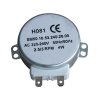sciencetoolbar
Member
LG what kind of field is generating the small generator without the coil? (question no 1)
ps. i.m not enywhere i just wish to have some other opinions to improve the small gen for the educational....this time we do not need numbers is true?
ps. i.m not enywhere i just wish to have some other opinions to improve the small gen for the educational....this time we do not need numbers is true?
Last edited:


